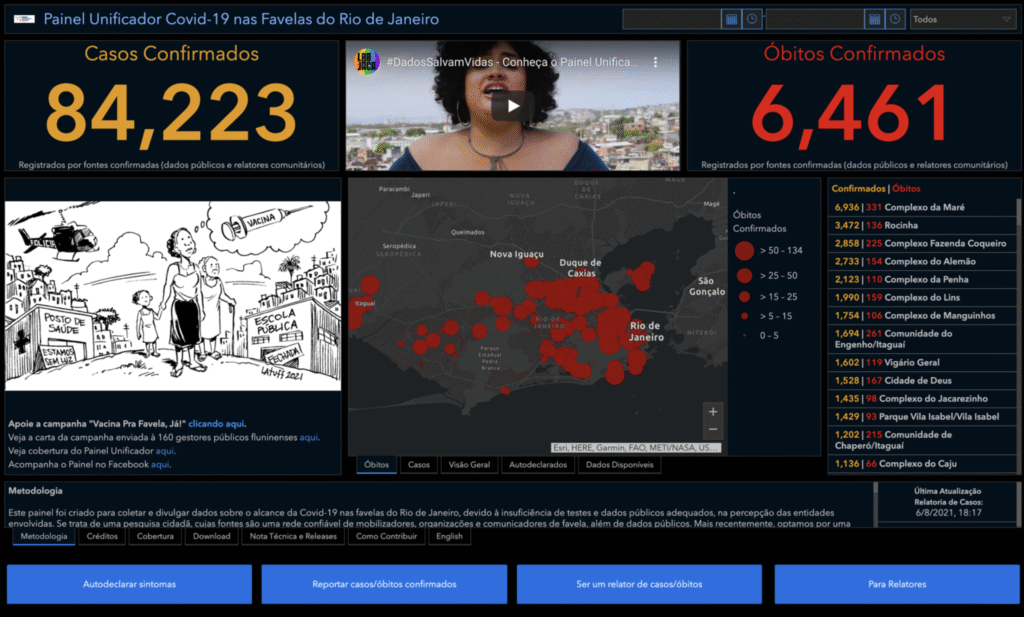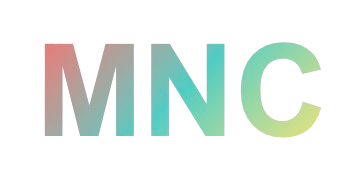Description
Governments and public health agencies used public dashboards to display how many people died or had COVID-19. Public dashboards were generated from official data, yet some countries severely lacked testing. For example, when the Ômicron variant of SARS-COVID-19 came, Brazilians were instructed not to test unless they were experiencing symptoms. This caused official government dashboards to display a misleading picture of the pandemic. In addition to that, many favelas were not mapped, and the parts that were mapped were often outdated, leaving many favela residents without official addresses. More than 50% of residents do not have zip codes, causing residents to give local stores or community centers as their address. The addresses residents give are often for nearby stores or community centers outside of their geographical area of the favela. When residents did get tested and reported it, the positive test would be associated with the “formal” nearby neighborhoods.
As COVID-19 started, the nonprofit organization Catalytic Communities (CatComm) in Rio de Janeiro reached out to several favela community leaders they had worked with for the last two decades, so they could reach a wide network of favelas. Together, they started to organize biweekly Zoom meetings to discuss the pandemic within their communities. In March 2020, the volunteers would go to their favelas and start to count their own COVID-19 cases. To collect data, volunteer residents went door to door asking for information on cases and deaths. CatComm would also collect this information via WhatsApp groups, as many residents knew how to use the app. The scattered information collected about COVID cases would be organized and consolidated onto a spreadsheet.
In May 2020, CatComm had a meeting with Ersi, an international supplier of web geographic information system (GIS) maps, with volunteer groups that give this service for free to marginalized communities. Ersi had their volunteer groups help CatComm create Painel Unificador COVID-19 nas favelas do Rio de Janeiro (Unified COVID-19 Dashboard in the Favelas of Rio de Janeiro). Painel Unificador is an online dashboard that contains all the information about COVID-19 cases gathered from the CatComm volunteers. Part of this information was also collecting zip code data associated with COVID-19 cases and deaths from the government database. If a resident did not have a zip code, they would be given one that aligned with an updated favela map the volunteers created.

The Painel Unificador had red dots to indicate COVID-19 cases and deaths that came from four main sources. About 1.5% of the data provided came from official municipal government dashboards. About 5% of the data was reported by volunteers who worked with CatComm in the past. About 15% of the data came from a Google form linked to the Painel for those who had internet access and could report their own COVID cases and deaths. The last about 80% of the data came from the manual process of volunteers matching cases associated with existing zip codes with actual favela geographic areas. In July 2020, official government sources said the favelas in Rio de Janeiro had about 760 cases and about 144 deaths. Yet the Painel reported 5,410 cases and 751 deaths. Creating the Painel allowed the residents to have a more accurate picture of the pandemic than the official government sources did. When a resident reported to the Painel volunteers that they had tested positive, they would get help with basic needs, such as getting meals and masks from the community leaders who helped create the Painel.
Connection to Mobile Networked Creativity
The Painel Unificador is a robust example of Mobile Networked Creativity. The dashboard demonstrates how a network can make a difference in mapping the unmapped. It was done through a combined effort of organizations, community leaders, and favela residents via mobile and GIS technology. The Painel Unificador helped the favela communities to manage the pandemic, keeping the residents safe. At the same time, it gave visibility to COVID-19 cases and deaths that were not being reported.
Location
Rio de Janeiro, Brazil
To Learn More
- Damir Ivanković et al., “Features Constituting Actionable COVID-19 Dashboards: Descriptive Assessment and Expert Appraisal of 158 Public Web-Based COVID-19 Dashboards,” Journal of Medical Internet Research 23, no. 2 (2021).
- Naleef Fareed et al., “US COVID-19 State Government Public Dashboards: An Expert Review,” Applied Clinical Informatics 12, no. 02 (2021): 208–21.
- Jesse Pietz, Scott McCoy, and Joseph H. Wilck, “Chasing John Snow: Data Analytics in the COVID-19 Era,” European Journal of Information Systems 29, no. 4 (2019): 388–404.
- “August 11, 2020 Press Release–COVID-19 In Favelas unified Dashboard 2nd Press Conference,” Catalytic Communities.
- Rafael Galdo, “Em Comunidades Do Rio, Salto No Número de Infecções Por Covid-19 Ultrapassa o Dobro Da Média Da Cidade,” O Globo, 2021.
- Selma Schmidt, Gilberto Porcidonio, and Gustavo Goulart, “Favelas do Rio contestam número oficial de mortes por Covid-19 e criam painel próprio,” Extra, July 23, 2020.
- G1, “Há risco de falta de testes Para Covid No Brasil, Alerta Associação de Laboratórios,” G1, January 12, 2022.
- Renata Gracie and Amanda Scofano, “Nota Técnica No.1: Covid-19 Nas Favelas: Contribuições Para Estratégias de Visibilizar Esses Territórios” (Rio de Janeiro, RJ: FioCruz, December 10, 2020).
- Personal communication with Theresa Williamson via WhatsApp on June/July 2021.
